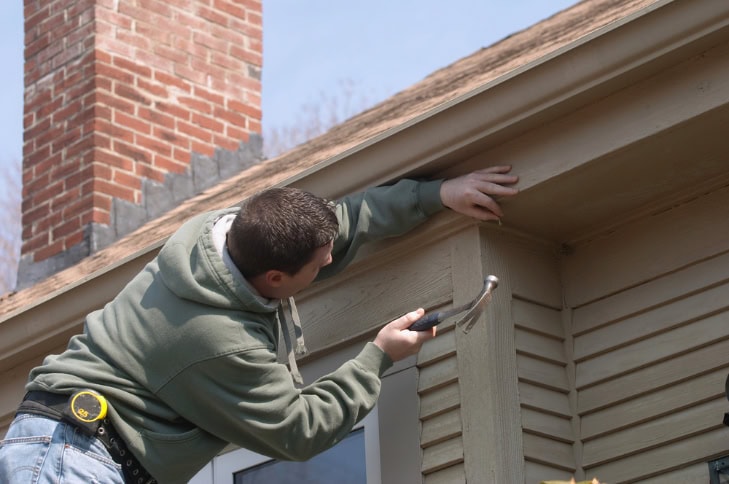Professional roof assessment involves thorough inspection of structural integrity, materials, and potential issues that could compromise your home's protection.
Share:

Summary:
A comprehensive roof assessment examines multiple components of your roofing system. We evaluate structural soundness, material condition, and potential problem areas that could lead to leaks or damage.
Professional assessments go beyond what you can see from the ground. They include interior inspections, exterior evaluations, and detailed documentation of findings. This thorough approach identifies both obvious issues and hidden problems that could become costly repairs if left unaddressed.
We begin by assessing your roof’s structural integrity. We check for sagging, uneven surfaces, and signs of structural stress that could indicate underlying problems. This evaluation includes examining the roof deck, trusses, and support systems from both interior and exterior vantage points.
Safety considerations play a crucial role in this process. We determine whether the roof can safely support inspection activities and identify any immediate hazards. We look for soft spots that might indicate water damage or deterioration beneath the surface materials.
The structural assessment also evaluates how well your roof handles load distribution. In Talbot County, this means ensuring your roof can withstand wind loads from coastal storms and snow loads during winter months. We examine connection points, fasteners, and overall system integrity to verify everything meets current building standards.
We begin by assessing your roof’s structural integrity. We check for sagging, uneven surfaces, and signs of structural stress that could indicate underlying problems. This evaluation includes examining the roof deck, trusses, and support systems from both interior and exterior vantage points.
Safety considerations play a crucial role in this process. We determine whether the roof can safely support inspection activities and identify any immediate hazards. We look for soft spots that might indicate water damage or deterioration beneath the surface materials.
The structural assessment also evaluates how well your roof handles load distribution. In Talbot County, this means ensuring your roof can withstand wind loads from coastal storms and snow loads during winter months. We examine connection points, fasteners, and overall system integrity to verify everything meets current building standards.
Interior inspection often reveals roof problems before they become visible from outside. We examine attic spaces, ceilings, and walls for water stains, moisture damage, and ventilation issues that indicate roofing problems.
Attic inspections provide valuable insights into roof performance. We look for water infiltration signs, inadequate ventilation, and insulation problems that affect energy efficiency. These interior evaluations complement exterior assessments to provide complete condition analysis.
Water damage detection requires systematic examination of interior spaces. We look for water stains on ceilings and walls that indicate active or previous leaks. We examine attic areas for moisture accumulation, mold growth, and water damage to structural components.
Leak detection goes beyond obvious water stains. We use specialized techniques to identify moisture infiltration points that haven’t yet caused visible damage. We examine insulation for compression or discoloration that indicates water exposure and check for rust on metal fasteners or components.
In Talbot County’s humid climate, we pay special attention to ventilation adequacy. Poor ventilation can cause moisture buildup that mimics leak damage while also contributing to premature roof deterioration. We evaluate intake and exhaust ventilation to ensure proper air circulation throughout the roofing system.
Advanced assessment techniques may include infrared technology to identify temperature variations that indicate moisture problems. These methods help us locate hidden issues that traditional visual inspection might miss, providing more comprehensive evaluation of your roof’s condition.
Proper ventilation assessment examines both intake and exhaust systems to ensure adequate air circulation. We evaluate soffit vents, ridge vents, and other ventilation components to verify they’re functioning correctly and providing balanced airflow throughout the attic space.
Energy efficiency evaluation considers how well your roof manages heat transfer and moisture control. We examine insulation levels, air sealing, and thermal bridging that affects your home’s energy performance. We identify areas where improvements could reduce heating and cooling costs.
Ventilation problems often contribute to premature roof aging and material deterioration. Inadequate ventilation can cause ice dam formation in winter and excessive heat buildup in summer. We assess these factors as part of comprehensive roof condition evaluation.
The assessment includes recommendations for ventilation improvements that could extend roof life and improve energy efficiency. In Maryland’s variable climate, proper ventilation helps prevent moisture problems while reducing thermal stress on roofing materials.
Professional roof assessment provides the information you need to make smart decisions about maintenance, repairs, or replacement. Understanding what we evaluate helps you recognize when assessment is needed and what our findings mean for your home’s protection.
Regular assessment prevents small problems from becoming major expenses. It also helps you plan for future roofing needs and take advantage of favorable weather windows for necessary work. When you need expert roof assessment in Talbot County, Bay Area Exteriors brings over 30 years of experience and GAF Master Elite certification to ensure thorough, professional evaluation of your roof’s condition. Contact us today!
Article details:
Share:
Continue learning: